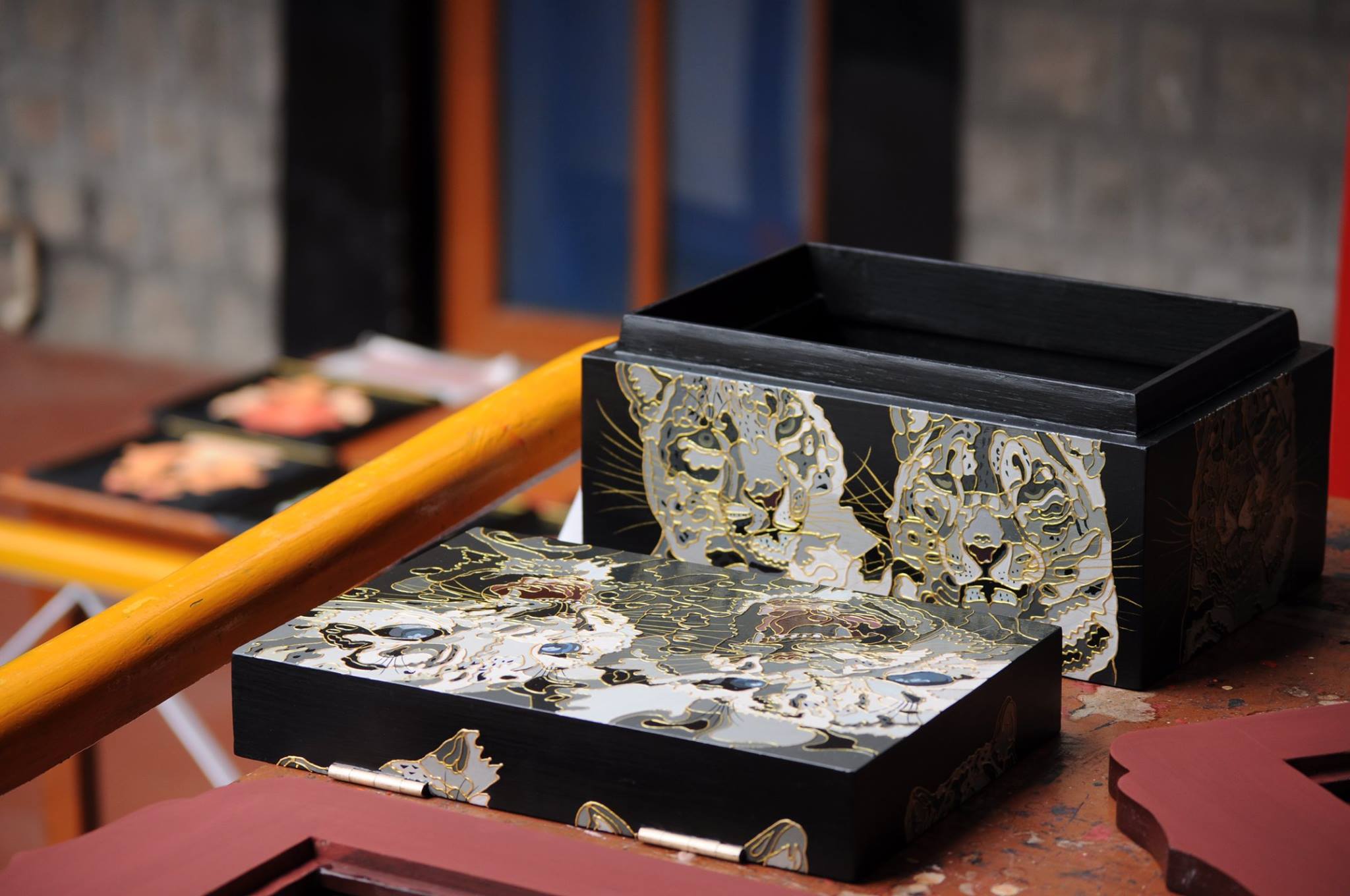Wood Painting
In Tibet, painting was both a sacred art used in the creation of thangkas and also a decorative one, used to ornament furniture and the walls of houses. While the uses of each are very different, the Tibetan aesthetic remains relatively consistent and easy to recognize in both religious and decorative art. Images and designs are highly stylized, and vibrant colors seem to pop out from their flat surfaces. Tibetan decorative art, while not a sacred art, does draw deeply from Tibet’s rich Buddhist tradition, often employing religious iconography such as the Eight Auspicious Symbols, the Five Offerings, and the Eight Precious Substances. Even many animals and landscape elements are thought to have a religious significance, and it is believed to be good luck to fill your house and walls with such auspicious symbols of good luck.




